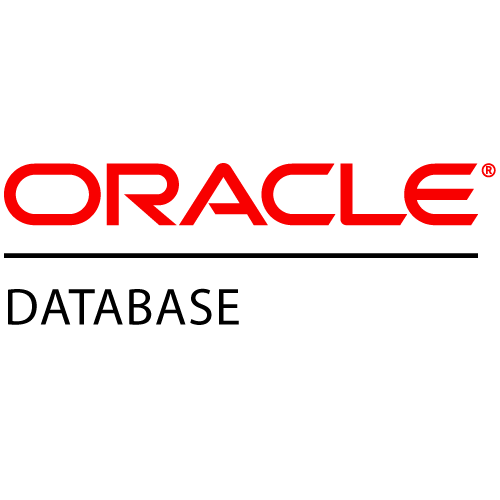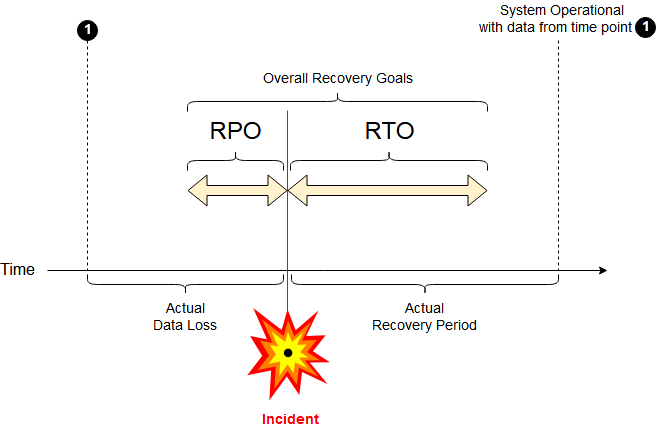
02 Mar Maximum Availability for Oracle (Standard Edition) Databases
As a database service company, we at Monin aim to help Oracle users find the right high availability setup for their specific requirements. In this article, we will explore Oracle’s various high availability and disaster recovery solutions, including both enterprise license features and alternatives available for the standard edition.
We will also take a closer look at Maximum Availability Architecture (MAA), which combines Oracle Real Application Clusters (RAC) with Oracle Data Guard to provide a highly available solution for clients with strict RPO and RTO requirements.
Key Metrics
To determine the appropriate solution for your needs, it is important to consider the following business requirements
- Uptime: This is expressed as a percentage of time that the system remains operational, excluding planned downtimes. The higher the percentage, the more complex the underlying infrastructure required. For example, an uptime requirement of 99.99% means that the system can have a maximum downtime of 52 minutes per year.
- Recovery Time Objective (RTO): This is the acceptable duration of time within which the service must be restored after a disaster, with minimal impact on the business. The RTO is expressed in seconds, minutes, hours, days, or other units depending on the specific need.
- Recovery Point Objective (RPO): This is the acceptable amount of data loss that can be tolerated after a disaster without negatively impacting the business. The RPO is expressed in seconds, minutes, hours, days, or other units depending on the specific need.

https://creativecommons.org/licenses/by/4.0/
The above requirements are crucial in determining the appropriate level of complexity for the solution required. A high uptime requirement, for instance, necessitates a complex and redundant infrastructure to minimize downtime. Similarly, a low RTO and RPO require more sophisticated disaster recovery strategies, such as real-time replication of data, which can significantly increase the complexity and cost of the solution. Therefore, it is essential to carefully balance the business requirements with the level of complexity and cost of the solution, to ensure optimal performance and efficiency.
High Availability
When talking about High Availability, our main driver is achieving as much Uptime as possible. Oracle offers a number of High Availability options, which we summarized in the table below. In terms of uptime, the options are ordered from highest uptime guarantee to lowest.
| Description | RAC | RAC one node | SEHA |
| Edition | Enterprise Edition (EE) | Enterprise Edition
(EE) |
Standard Edition Two (SE2) |
| Max # nodes | 100 | 100 | 2 |
| Cluster structure | Active/Active (DB active on all nodes) | Active/Passive (DB active on only 1 node) | Active/Passive (DB active on only 1 node) |
| Licensing | All nodes + additional option on top of EE | All Nodes + additional option on top of EE (cheaper than RAC) | Only active node (10-day failover rule) |
| Automatic Restart | YES | YES | YES |
| Automatic Failover | YES | YES | YES |
| Load Balance | YES | NO | NO |
| Zero downtime patching (RAC rolling patch) | YES | YES | NO |
| Zero Downtime relocation (Transparant Failover) | YES | YES | NO |
| Disaster Recovery | NO* | NO* | NO* |
*: a certain level of disaster recovery can be setup using the underlying storage layer (Oracle Automatic Storage Management (ASM))
As shown in the table above, Oracle’s Enterprise Edition includes several advanced features for high availability that are not available in the Standard Edition.
Oracle RAC is a well-known solution that enables an active/active setup across multiple servers. Benefits of RAC include load balancing, online patching/upgrading, scaling, and transparent failover to another node/server. RAC was available on the Standard Edition of Oracle until version 18c, with some limitations. As of Oracle 19c however, RAC is only available as an additional option on top of the Enterprise Edition, with the ability to provide more than 2 servers to share the load.
When it comes to Oracle Standard Edition alternatives for high availability, Monin can still utilize several creative solutions to get the most out of a standard license. Standard Edition High Availability (SEHA) is a good option for small businesses that require high availability but are limited by licensing costs.
With SEHA, organizations can use two servers (physical or virtual) with the database only active on one of them. In case of a problem with the active server, the database will switch over to the other node and become active on that server.
One of the main drawbacks of SEHA is that there’s always some downtime to switchover/failover. The standby server also remains idle until a failover occurs, meaning that it cannot be used for any other useful work. This can be a significant limitation for organizations that have limited resources and want to make the most out of their infrastructure.
Maximum Availability Architecture
For clients with very strict availability requirements,Oracle Maximum Availability Architecture (MAA) is the go-to solution. Oracle MAA is a solution that combines Real Application Clusters (RAC) and Data Guard. RAC provides high availability at the database instance level while Data Guard ensures high availability at the site level. Oracle MAA is only available for Enterprise Edition
By combining these two technologies, MAA provides a robust solution for clients with strict high availability requirements, minimizing both planned and unplanned downtime. The result is a high-performance, fault-tolerant, and scalable architecture that can help ensure business continuity.
However, achieving high availability and rapid recovery times comes at a cost, both in terms of hardware and licensing. As a result, it is important for organizations to work with a trusted partner, such as Monin, to identify the optimal fit for their needs and budget.
In recent years, cloud systems have emerged as a popular and cost-effective option for businesses looking to implement high availability solutions. Cloud-based systems offer several advantages such as scalability, flexibility, and reduced hardware costs. With the ability to replicate data across multiple regions and even across cloud providers, cloud-based systems can offer highly resilient and highly available solutions.
As businesses increasingly move towards the cloud, implementing high availability solutions in the cloud can serve as a perfect entry point towards a fully cloud-based infrastructure. With the right configuration and management, cloud-based systems can offer highly available and highly resilient solutions that can help businesses meet their high availability requirements and drive their digital transformation.
Conclusion
In conclusion, Oracle provides a range of solutions for high availability and disaster recovery, from enterprise features to limited alternatives on Standard Edition. Choosing the right setup for your business can be a daunting task, but it is crucial to ensure your systems are always available and your data is secure. Whether you need to meet strict RPO and RTO requirements or want to maximize the use of your standard edition license, there is a solution that can fit your needs.
At Monin, we are committed to helping our clients find the right high availability and disaster recovery setup for their specific requirements. We understand that every business has unique needs, and our team of experts can work with you to create a customized solution that meets your specific needs and budget.
If you’re interested in discussing your high availability and disaster recovery requirements or have any questions about Oracle’s high availability and disaster recovery solutions, we encourage you to get in touch with us. Our team is ready to answer your questions and help you find the right solution for your business.
Interesting Links
- Oracle Database High Availability Solutions: https://www.oracle.com/database/technologies/high-availability.html
- Oracle Maximum Availability Architecture: https://www.oracle.com/database/technologies/maximum-availability-architecture/
- Oracle Data Guard: https://www.oracle.com/database/data-guard/
- Oracle Real Application Clusters (RAC): https://www.oracle.com/database/real-application-clusters/
- Oracle RAC One Node: https://www.oracle.com/database/technologies/rac/racone.html
- Oracle Automatic Storage Management: https://www.oracle.com/database/technologies/rac/asm.html
- DBVisit Standby: https://dbvisit.com/
